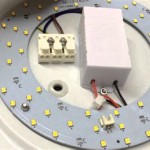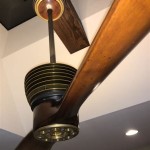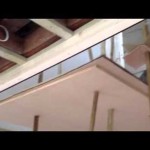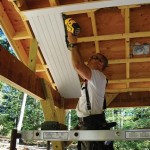Getting The Most Out Of Your Garage Ceiling Fans (Reddit 2024): A Comprehensive Guide
Garage ceiling fans are a common sight in many homes, often overlooked in terms of their potential for improving the overall functionality and comfort of the space. In 2024, discussions on platforms like Reddit continue to highlight the various ways homeowners can maximize the benefits of these fans, extending beyond simple air circulation to encompass energy efficiency, temperature regulation, and even aesthetic enhancements. This article explores strategies for optimizing the performance of garage ceiling fans, drawing inspiration from Reddit discussions and providing practical advice for homeowners seeking to enhance their garage environment.
The garage is commonly used for more than just parking vehicles. It often serves as a workshop, storage area, gym, or even a hobby space. Consequently, maintaining a comfortable and well-ventilated garage is crucial for various activities. A ceiling fan can play a significant role in achieving this comfort, especially in climates with extreme temperatures. By understanding the principles of airflow, fan selection, and maintenance, homeowners can significantly improve the usability of their garage.
Selecting the Right Garage Ceiling Fan
Choosing the appropriate ceiling fan for a garage environment requires careful consideration of several factors. The size of the garage, ceiling height, climate, and specific usage patterns all influence the ideal fan type and size. Reddit threads often contain discussions regarding the optimal fan blade span relative to the garage square footage. A too-small fan will be ineffective in circulating air, while an excessively large fan may create uncomfortable drafts or pose a safety hazard.
For smaller garages, a fan with a blade span of 44 to 52 inches is generally sufficient. Garages exceeding 400 square feet may benefit from fans with a larger blade span, such as 56 to 60 inches or even multiple fans strategically positioned throughout the space. The ceiling height is another critical consideration. For ceilings lower than eight feet, a hugger-style fan, also known as a flush-mount fan, is recommended to maintain adequate headroom. For higher ceilings, a downrod can be used to position the fan blades at an optimal distance from the floor, typically between seven and nine feet.
The harsh environment of a garage, which can be dusty, humid, and subject to temperature fluctuations, necessitates selecting a fan designed for durability and resilience. Fans rated for damp or wet locations are ideal, particularly in garages prone to moisture or located in humid climates. These fans feature sealed motors and rust-resistant components to withstand the challenges of the garage environment. Furthermore, consider fans with reversible motors, allowing for year-round use. In the summer, the fan blades should rotate counterclockwise to create a downdraft, providing a cooling breeze. In the winter, reversing the motor direction to clockwise pushes warm air down from the ceiling, helping to distribute heat more evenly and reduce energy consumption.
Material selection also plays a role in the longevity of a garage ceiling fan. Blades made from ABS plastic or metal are more resistant to warping and damage than those made from wood or other less durable materials. The motor should be of high quality, preferably with sealed bearings for smoother and quieter operation. Energy-efficient motors, such as those with DC motors (Direct Current), consume less electricity and offer greater speed control compared to traditional AC (Alternating Current) motors. Reddit discussions frequently feature comparisons of different motor types, highlighting the long-term cost savings and performance advantages of DC motors.
In addition to these practical considerations, aesthetics can also play a role in fan selection. While functionality is paramount, choosing a fan that complements the overall style of the garage can enhance its visual appeal. Options range from industrial-style fans with exposed hardware to more contemporary designs with sleek lines and integrated lighting. Consider the existing color scheme and décor of the garage when selecting a fan to create a cohesive and visually pleasing space.
Optimizing Airflow and Ventilation
Proper airflow and ventilation are crucial for maintaining a comfortable and healthy garage environment. Garage ceiling fans can significantly contribute to this by circulating air, reducing humidity, and preventing the buildup of stale air and odors. However, simply installing a fan is not enough; strategic placement and usage are essential to maximize its effectiveness. Reddit threads often address common issues such as stagnant air pockets and uneven temperature distribution, offering solutions based on real-world experiences.
The location of the ceiling fan within the garage is a key factor in optimizing airflow. Ideally, the fan should be positioned in the center of the room to ensure even air distribution. However, in garages with unusual layouts or obstructions, adjustments may be necessary. Consider placing the fan closer to areas where air circulation is most needed, such as workspaces or storage areas. If the garage is particularly long or narrow, multiple fans may be required to provide adequate coverage.
The fan speed also plays a significant role in airflow. Higher speeds provide greater air circulation, but can also create excessive drafts and noise. Experiment with different speed settings to find the optimal balance between comfort and performance. In general, lower speeds are sufficient for maintaining a gentle breeze and preventing stagnant air, while higher speeds are more effective for cooling down the garage on hot days. Investing in a fan with multiple speed settings allows for greater control over airflow and customization to suit individual preferences.
In addition to the ceiling fan, consider incorporating other ventilation strategies to further improve air quality in the garage. Opening windows or doors, even for a short period, can help to exhaust stale air and introduce fresh air. Installing an exhaust fan, particularly near areas where fumes or odors are generated, can also be beneficial. Combining these strategies with the use of a ceiling fan can create a comprehensive ventilation system that effectively removes pollutants and maintains a comfortable environment.
Another aspect of airflow optimization involves ensuring that the fan blades are properly balanced. Unbalanced blades can cause the fan to wobble, creating noise and potentially damaging the motor. Most ceiling fans come with a balancing kit that includes weights that can be attached to the blades to correct any imbalances. Regularly checking and adjusting the blade balance can help to extend the lifespan of the fan and maintain its smooth and quiet operation.
Furthermore, consider the impact of obstructions on airflow. Large items stored in the garage can block or redirect airflow, reducing the effectiveness of the ceiling fan. Arrange storage in a way that minimizes these obstructions, allowing air to circulate freely throughout the space. Raising items off the floor using shelving or pallets can also improve airflow and prevent the buildup of moisture and mold.
Maintaining and Troubleshooting Garage Ceiling Fans
Regular maintenance is essential for ensuring the long-term performance and reliability of garage ceiling fans. Dust and debris can accumulate on the blades and motor, reducing efficiency and potentially causing damage. Periodic cleaning and inspection can help to prevent these issues and extend the lifespan of the fan. Reddit users frequently share tips and tricks for cleaning and maintaining their ceiling fans, offering practical advice for various models and situations.
Cleaning the fan blades is a simple but important maintenance task. Use a damp cloth or microfiber duster to wipe down the blades, removing any accumulated dust and grime. For stubborn stains or buildup, a mild detergent can be used. Be sure to dry the blades thoroughly after cleaning to prevent moisture damage. Consider using a fan blade cleaning brush or tool specifically designed for this purpose, as these can make the task easier and more efficient.
In addition to cleaning the blades, inspect the motor housing and other components for dust and debris. Use a vacuum cleaner with a brush attachment to remove any accumulated dust from the motor vents. This will help to prevent overheating and ensure optimal performance. Lubricating the motor bearings can also help to reduce friction and noise. However, only use lubricants specifically designed for ceiling fan motors, as other types of lubricants may damage the motor.
Periodically check the tightness of all screws and connections on the fan. Loose screws can cause the fan to wobble or make noise. Tighten any loose screws using a screwdriver. If a screw is stripped or damaged, replace it with a new one of the same size and type. Similarly, inspect the wiring connections for any signs of damage or corrosion. If any wires are frayed or loose, contact a qualified electrician to repair or replace them.
Troubleshooting common issues such as wobbling, noise, and flickering lights is also an important aspect of fan maintenance. Wobbling can often be resolved by balancing the fan blades, as discussed earlier. Noise can be caused by loose screws, unbalanced blades, or a worn motor. Try tightening the screws and balancing the blades first. If the noise persists, the motor may need to be lubricated or replaced. Flickering lights can be caused by a loose connection in the light fixture or a faulty bulb. Check the connections and replace the bulb if necessary. If the problem persists, consult a qualified electrician.
Finally, consider the environmental impact of replacing a garage ceiling fan. Instead of discarding an old fan, explore options for repairing or repurposing it. Many parts, such as blades and motors, can be replaced individually, extending the lifespan of the fan. Alternatively, consider donating the fan to a charity or recycling center. By taking these steps, homeowners can reduce waste and minimize their environmental footprint.

Discover The Game Changing Benefits Of Damp Rated Industrial Ceiling Fans For Your Space Super Duty

Parrot Uncle 60 In Indoor Integrated Led Black Dimmable Ceiling Fan With Light Remote Control And 6 Sd Dc Motor F8310bk110v The Home Depot

Mule Ceiling Mounted Garage Fan The Green Head

Parrot Uncle 60 In Indoor Integrated Led Black Dimmable Ceiling Fan With Light Remote Control And 6 Sd Dc Motor F8310bk110v The Home Depot

How To For A Ceiling Fan Reviews By Wirecutter

Hampton Bay Industrial Ceiling Fans 60 At Thrift 2024 Remake

60 Inch Alexi Dc Motor Modern Downrod Ceiling Fan With Led Light Black

Reviews For Hubbell Lighting Progress Industrial 96 In Indoor Outdoor Nickel Ceiling Fan With Remote Included Garage Pg 1 The Home Depot

60 Inch Alexi Dc Motor Modern Downrod Ceiling Fan With Led Light Black

How Much Does Ceiling Fan Installation Cost Taskrabbit Blog
Related Posts








